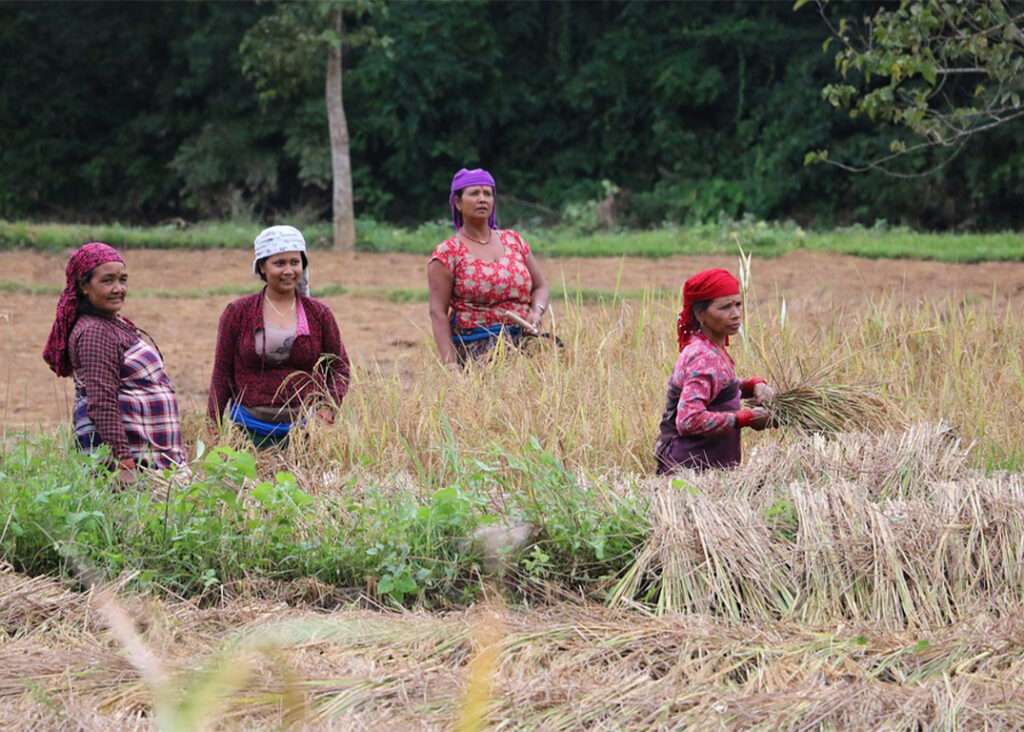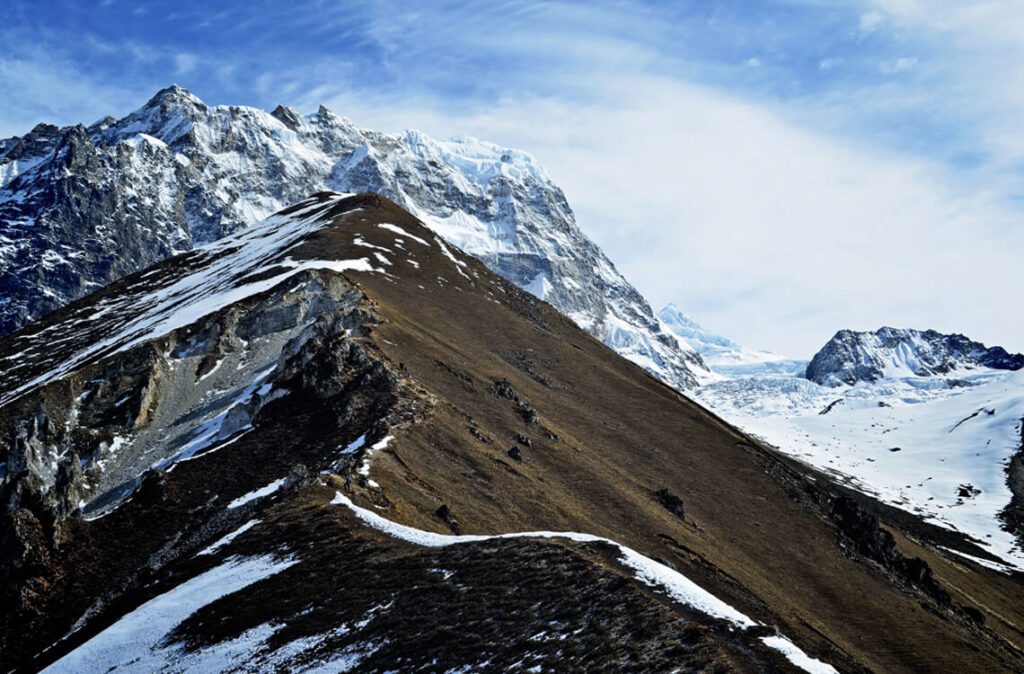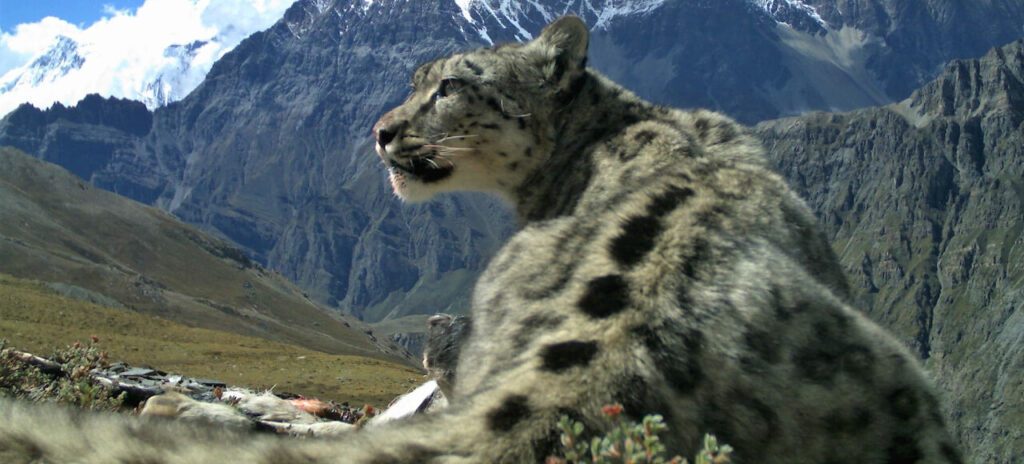Hold on to your hats, adventure seekers! Syabrubesi is a hidden gem nestled within the breathtaking Langtang National Park in Nepal. This tiny village is a nature lover’s paradise, surrounded by majestic mountain ranges, lush forests, and crystal-clear rivers. You’ll feel like you’re walking through a fairytale as you explore this enchanting wonderland. Get ready to be blown away by the natural beauty of Syabrubesi!
Location
Syabrubesi is a small village in the Rasuwa district of Nepal. It is located in the northern part of the country. The village is situated on the banks of the Bhote Koshi River, at an altitude of 2,380 meters above sea level.

Syabrubesi is an important starting point for treks to the Langtang National Park and the Langtang Valley. The location of Syabrubesi is characterized by its mountainous terrain, with steep slopes and rocky cliffs surrounding the village. The region is prone to landslides, particularly during the monsoon season, which can make travel to and from the village difficult.
Weather
Syabrubesi’s weather patterns are mainly influenced by its location in the Himalayan region. The village experiences four distinct seasons, each with its own weather characteristics.
The summer months of June, July, and August mark the beginning of the monsoon season in Syabrubesi. During this time, the village receives heavy rainfall, which can lead to landslides and flooding. The temperature during this season ranges from 15 to 25 degrees Celsius, with high humidity levels. The wet and muddy trails make it challenging to trek in the area during the monsoon season.
Also Read: Best time to do Upper Mustang Trek
The winter months of December, January, and February are relatively dry and cold, with temperatures dropping to below freezing point. The average temperature during these months ranges from 2 to 8 degrees Celsius. The dry weather during this season makes it an ideal time for trekking and exploring the surrounding areas, as the snowfall is minimal, and the skies are clear.
Spring and Autumn
The spring months of March, April, and May bring moderate temperatures and clear skies to Syabrubesi. During this season, the flowers start to bloom, and the landscape turns into lush greenery, making it a beautiful time to visit the area. The average temperature during this season ranges from 10 to 20 degrees Celsius, and the weather is generally pleasant.

The autumn months of September, October, and November are considered the best time to visit Syabrubesi. The weather during this season is dry and sunny, with temperatures ranging from 10 to 20 degrees Celsius. The clear skies and pleasant weather make it an ideal time for trekking, and travelers can enjoy the stunning views of the Himalayan mountain range.
Kathmandu to Syabrubesi
Syabrubesi is approximately 122 kilometers from Kathmandu, the capital city of Nepal. There are various ways to reach Syabrubesi from Kathmandu, which include private jeep or car, public bus, shared jeep, and local bus.
- Private Jeep or Car: One of the most convenient and comfortable ways to reach Syabrubesi is by hiring a private Jeep or car. You can book a private jeep or car from travel agencies or hire one from the taxi stand. The journey takes around 7-8 hours, and the cost depends on the type of vehicle you choose.
- Public Bus: Public buses are the most affordable way to reach Syabrubesi. The buses are available from Kathmandu’s Gongabu Bus Station, and the journey takes around 8-9 hours, depending on the road conditions. The cost of the bus ticket is relatively low, making it an ideal option for budget travelers.
- Shared Jeep: Shared jeeps are another popular mode of transportation from Kathmandu to Syabrubesi. You can find shared jeeps from the Old Bus Park in Kathmandu, and the journey takes around 7-8 hours. The cost of a shared jeep is slightly higher than that of a public bus but lower than that of a private vehicle.
- Local Bus: You can also take a local bus from Kathmandu to Dhunche and then another local bus from Dhunche to Syabrubesi. The bus ride from Kathmandu to Dhunche takes around 6-7 hours, and from Dhunche to Syabrubesi, it takes around 1-2 hours. This option is relatively inexpensive, but the bus ride can be tiring, especially on bumpy and winding mountain roads.
Major Trekking Route that goes through Syabrubesi
Langtang Trek:
Langtang Valley Trek is a popular and breathtaking trekking destination in Nepal. Located in the Langtang region, north of Kathmandu, it offers awe-inspiring mountain vistas, diverse landscapes, and a glimpse into the unique Tamang and Tibetan cultures.

The trek starts from Syabrubesi, a scenic village, and gradually ascends through lush forests of rhododendron and bamboo. As trekkers venture further, they are treated to panoramic views of snow-capped peaks like Langtang Lirung, Ganesh Himal, and Dorje Lakpa. The region is also home to Langtang National Park, which shelters a rich variety of flora and fauna, including the elusive red panda.
Gosainkunda Trek:
The Gosainkunda Trek offers a combination of natural beauty, cultural exploration, and spiritual experience. It provides an opportunity to immerse oneself in the serene Himalayan landscape while connecting with the religious heritage of the region.

The trek starts from Syabrubesi, a village in the Rasuwa district, and typically takes around 7-10 days to complete, depending on the route and the pace of the trekker. The trail offers stunning views of snow-capped peaks, lush valleys, and diverse flora and fauna.
Tamang Heritage Trail:
The Tamang Heritage Trail is located in the Langtang region of Nepal, northeast of Kathmandu. It covers areas in the Rasuwa district, including Tamang-inhabited villages and the Langtang National Park. The trail allows trekkers to immerse themselves in the rich culture and traditions of the Tamang people, an indigenous community of Nepal.

The Tamang Heritage Trail is easily accessible from Kathmandu. After a short drive, trekkers start their journey from Syabrubesi, the gateway to the Langtang region.
Ganesh Himal Trek:
Ganesh Himal is located in the Langtang region of Nepal, northwest of Kathmandu. It is named after the Hindu deity Lord Ganesh and offers stunning views of the Ganesh Himal mountain range. With its stunning natural beauty, cultural encounters, and moderate challenges, this trek offers a unique and rewarding adventure in the heart of the Himalayas.
Related: Ganesh Himal Trek
The journey begins in Kathmandu, where trekkers travel by road to Syabrubesi which is a picturesque village located at the starting point of the trek. Syabrubesi serves as the gateway to the Ganesh Himal region and is known for its stunning landscapes and warm hospitality.
Lifestyle of Syabrubesi
The lifestyle of Syabrubesi is unique and fascinating due to its location, geography, and culture.
The people of Syabrubesi primarily belong to the Tamang community, which is one of the indigenous ethnic groups of Nepal. The Tamangs have their own unique language, culture, and traditions. The Tamangs of Syabrubesi are known for their hospitality, friendliness, and hardworking nature. They have a strong sense of community and work together to support each other.

The lifestyle of Syabrubesi is closely linked to the natural environment. The people of Syabrubesi practice subsistence agriculture, which involves cultivating crops and raising livestock for their own consumption. The staple crops grown in Syabrubesi include rice, maize, millet, and wheat. The Tamangs of Syabrubesi also raise livestock such as cows, goats, and chickens.
Local People- Tamang
The Tamangs of Syabrubesi have a rich cultural heritage, which is reflected in their music, dance, and festivals. Tamangs have their own unique musical instruments, such as the damphu, which is a type of drum made from a hollowed-out tree trunk. The Tamangs also have their own traditional dance forms, such as the Syabru and the Tamang Selo.

The festivals of Syabrubesi are a colorful and vibrant affair. The Tamangs celebrate a range of festivals throughout the year, such as the Lhosar, which is the Tibetan New Year, and the Buddha Jayanti, which is the birth anniversary of Lord Buddha. During these festivals, the Tamangs dress up in traditional attire, perform traditional dances, and feast on traditional food.
The people of Syabrubesi have a deep respect for nature and believe in living in harmony with it. They have developed a unique system of community forest management, which involves the sustainable use of forest resources for the benefit of the entire community. The forests in Syabrubesi are home to a diverse range of flora and fauna, including the endangered Red Panda.
Highlights
Scenic Beauty
Syabrubesi is a picturesque village that offers visitors an awe-inspiring view of the natural beauty of the Langtang region. The hills and mountains are covered with lush green forests that add to the scenic beauty of the area. One of the highlights of Syabrubesi is the Bhote Koshi River, which flows through the village.
The river is a tributary of the Koshi River, and it adds to the charm of the village by providing a soothing sound of flowing water. Visitors can enjoy a peaceful stroll along the banks of the river and take in the scenic beauty of the surroundings.

The waterfalls in Syabrubesi are also a major attraction. The village is surrounded by several small waterfalls, and visitors can take a refreshing dip in the crystal-clear water. The sound of the cascading water and the mist created by the waterfalls create a magical atmosphere that visitors can enjoy.
The snow-capped mountains in the Langtang range are another highlight of the scenic beauty of Syabrubesi. The village offers a panoramic view of the Langtang range, including the Langtang Lirung, Gang Chhenpo, and Langshisa Ri peaks.
Tamang Culture
The Tamang community is one of the major ethnic groups in Nepal and is the predominant ethnic group in Syabrubesi. The Tamang people have a rich culture and tradition that has been passed down through generations. Visitors to Syabrubesi can immerse themselves in the Tamang culture and experience their unique lifestyle and customs.
One of the highlights of Tamang culture is their traditional dance. The Tamangs are famous for their colorful dances, which are performed during festivals and special occasions. The dances are accompanied by traditional Tamang music, which is created using a variety of musical instruments such as the damphu and tungna. The Tamangs also have their own language.
You may also like: Muktinath: A Sacred Temple In The Himalayas
Visitors can learn basic Tamang phrases and words during their stay, which can help them to communicate with the locals and gain a better understanding of their culture. The Tamang people are also skilled artisans and are known for their intricate handicrafts. Visitors can purchase handmade items such as traditional clothing, jewelry, and pottery as souvenirs to take back home.
Langtang National Park
Langtang National Park is one of the most beautiful protected areas in Nepal and is located near the village of Syabrubesi. The park covers an area of approximately 1,710 square kilometers and is home to several endangered species of wildlife, making it a popular destination for nature lovers, hikers, and trekkers. One of the major highlights of Langtang National Park is the stunning landscape. The park is located in the central Himalayas and is characterized by snow-capped mountains, glaciers, forests, and meadows. Langtang National Park is home to several high peaks, including Langtang Lirung, which is the highest peak in the park, reaching a height of 7,234 meters.

The park is also home to several species of wildlife, including the elusive snow leopard, red panda, Himalayan black bear, musk deer, and several species of birds. Visitors can explore the park and observe these animals in their natural habitat. The park is also home to several species of flora, including rhododendron forests, oak forests, and alpine meadows.
Langtang National Park is also an excellent destination for bird-watching enthusiasts. The park is home to several species of birds, including the Himalayan monal, the imperial pheasant, and the blood pheasant. Visitors can observe these beautiful birds in their natural habitat and take memorable photographs.
Kyanjin Gompa
Kyanjin Gompa is a must-visit attraction in Syabrubesi. It is a Buddhist monastery located in the Langtang Valley and is a popular destination for tourists and trekkers who visit the Langtang National Park. The monastery is situated at an altitude of 3,870 meters above sea level and can be reached by a short hike from Syabrubesi.

The Kyanjin Gompa is a small but beautiful monastery that offers a glimpse into Buddhist culture and tradition. The monastery is surrounded by snow-capped mountains, and the serene surroundings provide a peaceful and tranquil atmosphere. Visitors can observe the monks in their daily routines and learn about their way of life.
Kyanjin Gompa also offers stunning views of the Langtang range. The mountain peaks in the area, such as Langtang Lirung, Langshisa Ri, and Dorje Lakpa, are visible from the monastery. Visitors can take a short hike to the nearby Kyanjin Ri Peak, which offers a panoramic view of the entire valley. Kyanjin Gompa is also a popular destination for trekkers who visit the Langtang National Park. Many trekking trails pass through the monastery, making it a perfect place to take a break and enjoy the peaceful surroundings.
Trekking
Trekking is one of the main activities for visitors in Syabrubesi. The Langtang Valley Trek is a popular trekking route that starts from Syabrubesi and takes visitors through stunning landscapes and breathtaking mountain views. The trek is a perfect blend of adventure, culture, and nature.
The Langtang Valley Trek is a moderate-level trek that takes around 10-12 days to complete. The trek passes through the Langtang National Park, which is home to several rare and endangered species of wildlife. Trekkers can see a variety of flora and fauna, including rhododendron forests, alpine meadows, and high-altitude glaciers.

The trek also provides an opportunity to explore the local culture and tradition. Visitors can interact with the Tamang community and learn about their lifestyles, customs, and traditions. The Tamangs are famous for their hospitality and warm welcome to visitors.
Flora and Fauna
The flora and fauna of Syabrubesi are a fascinating aspect of this region, with a diverse range of species that call this place home.
Flora
The Langtang Valley is known for its unique flora, and Syabrubesi is no exception. The region is home to a variety of plants, including the beautiful rhododendrons. These flowering plants can be found in a variety of colors, and they are a sight to behold when in bloom. In fact, the rhododendron is the national flower of Nepal.
Also Check: Festivals in Nepal
Another interesting plant found in Syabrubesi is the juniper tree. Juniper trees are known for their unique scent, which comes from the essential oils found in the tree’s needles. The juniper is an important plant in the local ecosystem, providing food and shelter for a variety of animals.
Other plants found in Syabrubesi include the Himalayan blue poppy, which is the national flower of Bhutan, and the Himalayan birch, a beautiful tree with distinctive white bark.
Fauna
Syabrubesi is home to a diverse range of animals, including some of the rarest species in the world. One of the most well-known animals found in the region is the snow leopard. Snow leopards, considered a symbol of the Himalayas, rank among the rarest big cats in the world. Although notoriously difficult to spot in the wild, trekkers in the Langtang Valley can sometimes catch a glimpse of these elusive creatures.

Another animal commonly found in the region is the red panda. Red pandas are small, furry animals that are native to the Himalayas. Animals with distinctive red fur and bushy tails are an important part of the local ecosystem.

Other animals found in the Langtang Valley include Himalayan black bears, musk deer, langur monkeys, and a variety of bird species. These animals are all an important part of the local ecosystem, and they help to keep the region in balance.
Best Time to Visit
The best time to visit Syabrubesi is during the Autumn season (September to November) and Spring season (March to May). During these seasons, the weather is clear, and the temperature is mild, making it an ideal time for trekking and other outdoor activities. The skies are usually clear, and the mountain views are spectacular, offering an unforgettable experience for travelers.
Autumn season is the peak trekking season in Nepal, and Syabrubesi is no exception. The trails are busy with trekkers from around the world, and the tea houses are bustling with activity. The weather during this season is perfect for trekking, with warm days and cool nights. The forests are alive with colors, and the rhododendron flowers are in full bloom, creating a beautiful landscape.
Popular: 7 Best Trekking Destinations In Nepal For 2023
Spring season is another great time to visit Syabrubesi. The weather is warmer, and the snow starts melting, making the trails easier to navigate. Colorful flowers blanket the forests and hillsides, while wildlife emerges from hibernation, creating an ideal time for birdwatching and animal spotting.
Winter and Monsoon
During the winter season (December to February), Syabrubesi experiences heavy snowfall, making the trekking trails difficult to navigate. The temperatures can drop to freezing levels, making it challenging for travelers to enjoy outdoor activities. However, if you are an adventure seeker and love the snow, then this is the perfect time for you to visit Syabrubesi.
The monsoon season (June to August) brings heavy rainfall to the region, making it difficult for travelers to explore the trails. The trails can be muddy and slippery, and the skies are usually overcast, making it challenging to see the mountain views. However, if you don’t mind the rain and want to experience the lush green forests, then this is the perfect time to visit Syabrubesi.
Let our expert team at Asian Heritage Treks and Travel take care of everything — from guided tours to personalized packing tips and travel arrangements.
Plan an exciting trip







